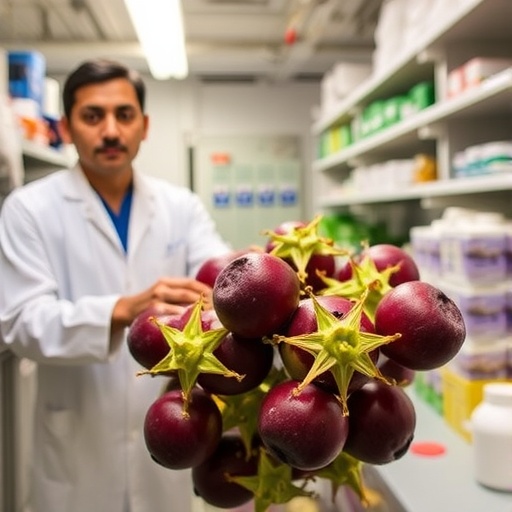
view more
Credit: FortisBC
When 115,000 tonnes of food waste hit Surrey’s processing facility each year, an invisible army goes to work—billions of microbes convert everything from banana peels to leftover pizza into renewable natural gas (RNG). Now, UBC researchers have identified a previously unknown bacterium in the Natronincolaceae family that plays a crucial role in this process.
RNG is produced when organic waste from landfills, farms and wastewater plants breaks down. The resulting gas is captured, cleaned and upgraded into usable energy.
Here’s how it works. Inside an anaerobic digester, bacteria first break food scraps into simple compounds like fatty acids, amino acids, and sugars. Other microbes turn these into organic acids, such as acetic acid—essentially vinegar. Methane-producing organisms then feed on the acetic acid to make methane, which is refined into RNG. The newly discovered microbe is one of these critical methane producers.
Molecular detectives
The discovery, published today in Nature Microbiology, was led by Dr. Ryan Ziels, associate professor in UBC’s department of civil engineering, who studies how to turn waste into useful resources using biological treatments.
“We were studying microbial energy production in the Surrey Biofuel Facility when we noticed something odd: the microbes that usually consume acetic acid had vanished, yet the methane kept flowing,” said Dr. Ziels. “Traditional methods couldn’t identify the organisms doing the heavy lifting.”
To solve the mystery, the team fed microbes nutrients containing a heavier form of carbon. Microbes use carbon to build new proteins—so by tracing the carbon in proteins, researchers could tell who was doing the work.
“Converting waste to methane is a cooperative process involving multiple interacting microbes,” explained Dr. Steven Hallam, a professor in UBC’s department of microbiology and immunology and a co-author on the paper. “This newly identified bacterium is one of the key players making it happen.”
Staying out of a pickle
Protein-rich food waste naturally produces ammonia as it breaks down, but too much ammonia can halt methane production and cause acetic acid to build up, turning waste tanks acidic and unproductive. The newly discovered microbes, however, tolerate high ammonia levels that would shut down other methane producers, keeping the system running when it would normally fail.
“Municipal facilities owe a lot to these organisms,” said Dr. Ziels. “If acetic acid builds up, tanks have to be dumped and restarted—an expensive, messy process.”
The findings help explain why some digesters sputter while others, like Surrey’s, continue producing energy under challenging conditions. The discovery also suggests that high-ammonia environments may actually benefit these key microbes, offering insights for more efficient designs.
Managing waste on land and sea
The molecular tagging approach could also detect other elusive microbes. Dr. Ziels and his colleagues are now using the same technique to study microbial communities breaking down microplastics in the ocean.
As cities worldwide wrestle with waste management and low-carbon energy transitions, the team believes some of nature’s smallest organisms may hold the keys to our biggest environmental challenges.
“Next time you toss your scraps in the compost bin, remember: you’re not just composting. You’re feeding microscopic powerhouses that help produce cleaner energy,” said Dr. Ziels.
The research was conducted in collaboration with Fortis BC and Convertus. Researchers at the U.S. Department of Energy’s Joint Genome Institute and Environmental Molecular Sciences Laboratory also contributed to the study.
Additional quotes:
“We’re delighted to help support British Columbia’s research ecosystem that has the potential for real-world impact. Advancements like this—that deepen our understanding of anaerobic digestion—may have the potential to enable facilities like Surrey Biofuels to produce more Renewable Natural Gas from the same amount of organic waste. Collaborations between UBC, FortisBC and the Surrey Biofuel facility continue to strengthen our ability to support lower carbon energy solutions.” – Jamie King, director, innovation and measurement, FortisBC
“At our Surrey facility, we strive to maintain a stable microbial community in order to achieve the benefits of RNG as a clean biofuel. If stability is compromised, this has significant financial implications as production schedules must be adjusted and we would have to re-start from scratch.” – Felizia Crozier, process support engineer, Convertus Group
Journal
Nature Microbiology
Method of Research
Experimental study
Subject of Research
Not applicable
Article Title
Activity-targeted metaproteomics uncovers rare syntrophic bacteria central to anaerobic community metabolism
Article Publication Date
21-Oct-2025
Lou Corpuz-Bosshart
University of British Columbia
lou.bosshart@ubc.ca
Office: 604-999-0473
Journal
Nature Microbiology
Method of Research
Experimental study
Subject of Research
Not applicable
Article Title
Activity-targeted metaproteomics uncovers rare syntrophic bacteria central to anaerobic community metabolism
Article Publication Date
21-Oct-2025
Keywords
bu içeriği en az 2000 kelime olacak şekilde ve alt başlıklar ve madde içermiyecek şekilde ünlü bir science magazine için İngilizce olarak yeniden yaz. Teknik açıklamalar içersin ve viral olacak şekilde İngilizce yaz. Haber dışında başka bir şey içermesin. Haber içerisinde en az 12 paragraf ve her bir paragrafta da en az 50 kelime olsun. Cevapta sadece haber olsun. Ayrıca haberi yazdıktan sonra içerikten yararlanarak aşağıdaki başlıkların bilgisi var ise haberin altında doldur. Eğer yoksa bilgisi ilgili kısmı yazma.:
Subject of Research:
Article Title:
News Publication Date:
Web References:
References:
Image Credits:



